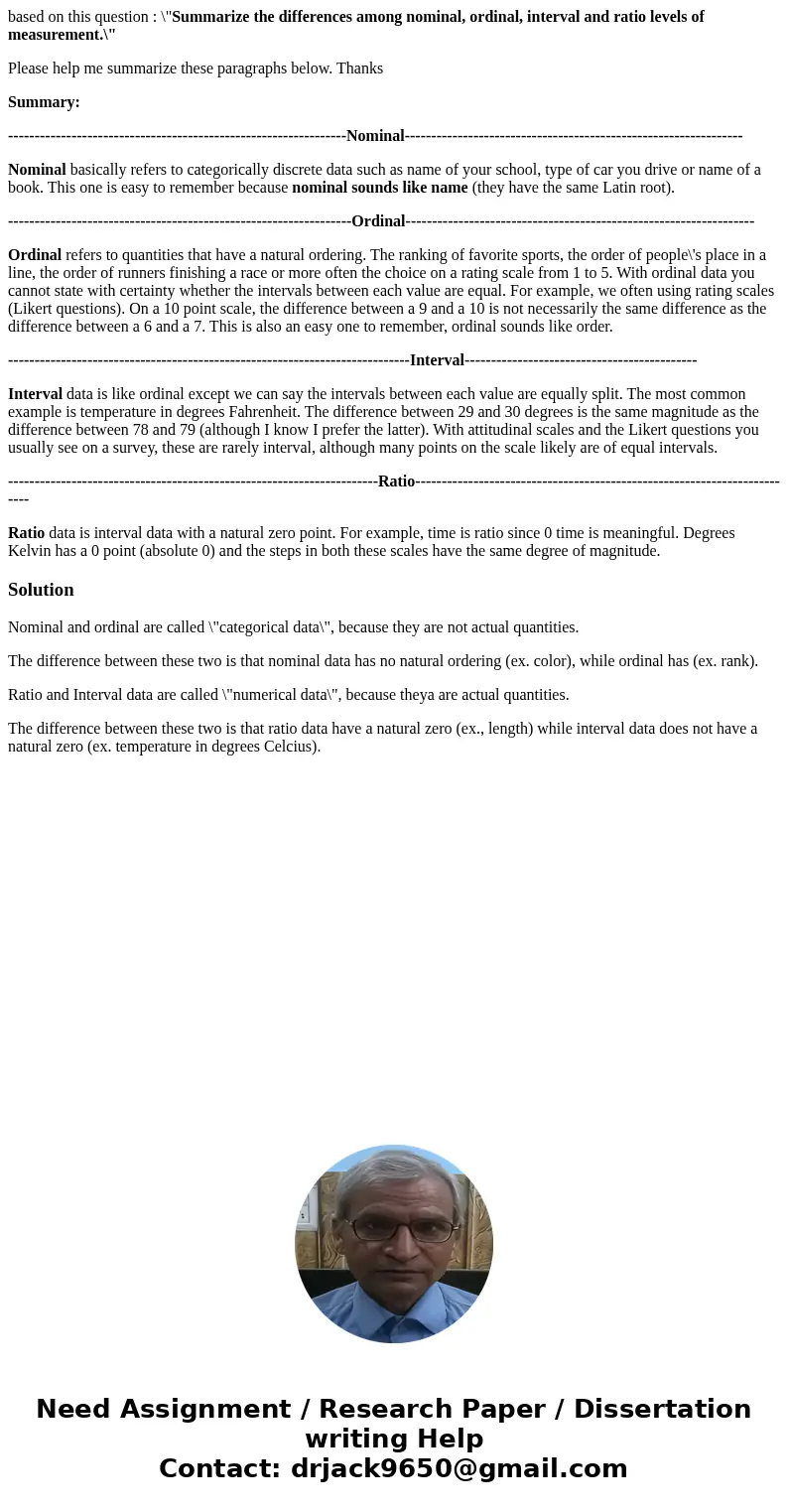based on this question Summarize the differences among nomi
based on this question : \"Summarize the differences among nominal, ordinal, interval and ratio levels of measurement.\"
Please help me summarize these paragraphs below. Thanks
Summary:
----------------------------------------------------------------Nominal----------------------------------------------------------------
Nominal basically refers to categorically discrete data such as name of your school, type of car you drive or name of a book. This one is easy to remember because nominal sounds like name (they have the same Latin root).
-----------------------------------------------------------------Ordinal------------------------------------------------------------------
Ordinal refers to quantities that have a natural ordering. The ranking of favorite sports, the order of people\'s place in a line, the order of runners finishing a race or more often the choice on a rating scale from 1 to 5. With ordinal data you cannot state with certainty whether the intervals between each value are equal. For example, we often using rating scales (Likert questions). On a 10 point scale, the difference between a 9 and a 10 is not necessarily the same difference as the difference between a 6 and a 7. This is also an easy one to remember, ordinal sounds like order.
----------------------------------------------------------------------------Interval--------------------------------------------
Interval data is like ordinal except we can say the intervals between each value are equally split. The most common example is temperature in degrees Fahrenheit. The difference between 29 and 30 degrees is the same magnitude as the difference between 78 and 79 (although I know I prefer the latter). With attitudinal scales and the Likert questions you usually see on a survey, these are rarely interval, although many points on the scale likely are of equal intervals.
----------------------------------------------------------------------Ratio-------------------------------------------------------------------------
Ratio data is interval data with a natural zero point. For example, time is ratio since 0 time is meaningful. Degrees Kelvin has a 0 point (absolute 0) and the steps in both these scales have the same degree of magnitude.
Solution
Nominal and ordinal are called \"categorical data\", because they are not actual quantities.
The difference between these two is that nominal data has no natural ordering (ex. color), while ordinal has (ex. rank).
Ratio and Interval data are called \"numerical data\", because theya are actual quantities.
The difference between these two is that ratio data have a natural zero (ex., length) while interval data does not have a natural zero (ex. temperature in degrees Celcius).

 Homework Sourse
Homework Sourse